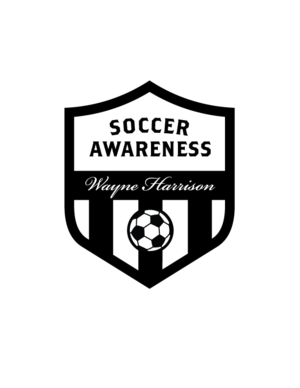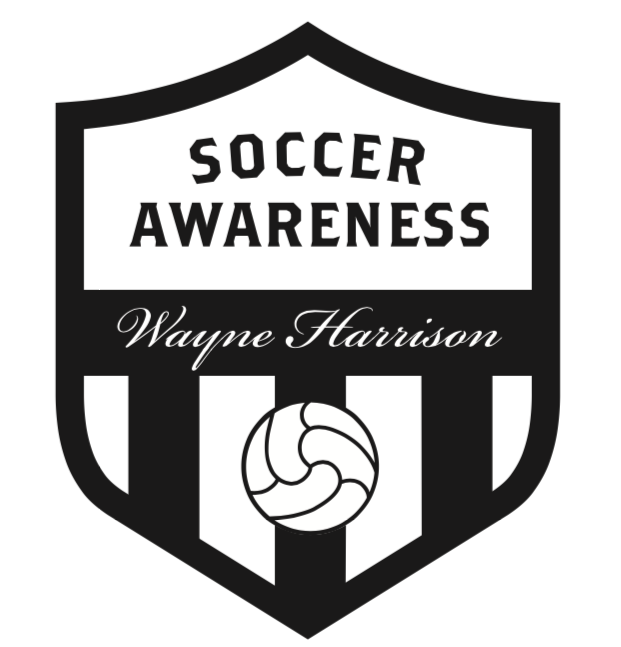Youth Soccer Training & Development: Myelin & Training - The Scientific Concept in Skill Development
/In this article, I explain the scientific background to the Soccer Awareness training method. A previous article introduced Awareness Training and explained how it helps players develop skills more rapidly than traditional training methods. In this article I want to explain the scientific background to Awareness Training and how the approach speeds up and improves decision making and the thought processes in soccer.
In my experience, there are three key ingredients for successful skill acquisition and development. They are:
Deep Practice
Ignition, and
Master Coaching
These three elements work together within your brain to create myelin. Myelin is the neural substance that adds vast amounts of speed and accuracy to your movement, thoughts and decisions.
What is Myelin and why is it important to skill development?
Inside the brain information is transmitted through neurons. Human skill is created by chains of nerve fibers carrying a tiny electrical impulse from the brain to the body through these neurons. Myelin is the insulation that wraps around the nerve fibers in our brains and increases signal strength, speed and accuracy. Myelin is produced by a person thinking about and analyzing skill situations themselves.
All human skills are created by linking the nerve fibers in your brain that send signals to your muscles. Myelin plays an important role by serving as an insulator for these nerve fibers. According to the U.S. National Library of Medicine and the National Institutes of Health, “The purpose of the myelin sheath is to allow impulses to transmit quickly and efficiently along the nerve cells” (NLM/NIH: MedlinePlus).
It has been shown that the more insulation – or more myelin – wrapped around those fibers, the stronger and faster the signal becomes as fewer of these electrical impulses leak out. Therefore, skill can now be redefined as “myelin insulation that wraps neural circuits and grows according to certain signals.” The two – skill development and myelin – are married together.
Myelin acts like an elastic band around the nerve fibers squeezing them and forcing the signal through faster. In football (soccer), with each repetition, myelin responds by wrapping layers around the nerve fibers, speeding up and improving decision making and thought processes. With each additional layer of myelin added, the player increases the ability to process the football specific skill required.
Everyone has myelin and everyone can improve themselves through its production. The more myelin produced; the thicker the sheath, the faster the message; the quicker thinking the player becomes.
How do the “three ingredients” work to help create myelin and improve performance?
Deep Practice
For his book Talent Code, Daniel Coyle searched out what he calls “hotbeds of talent” around the world, including a soccer field in São Paolo, Brazil. Through his research, he developed a theory of what he calls “Deep Practice” that helps produce amazing success. This means “training on the edge of your capabilities.” Training in this dynamic capacity leads to mistakes being made, which increases the speed of skill acquisition. Players learn through making errors/mistakes and then correcting them. This method produces results 10 times faster than regular practice.
As deep practice is occurring, the player is wrapping even more myelin around each circuit and increasing skill. Simply put: mistakes lead to better skill acquisition. Deep practice is most important for players 6 to 12 years old. Their spatial awareness and ability to understand tactical concepts is still developing and at its height, and they have an unlimited capacity to acquire and develop new motor skills.
Simply put: mistakes lead to better skill acquisition.
Repetition of themes in small sided games is crucial, and especially in the “sweet spot” on the edge of the comfort zone that produces errors but also teaches skills. This is where futsal comes in to play.
As Coyle explains in Talent Code, “Most Brazilian players learn their skills through futsal, the ssg equivalent of soccer. Futsal uses a half size and much heavier ball that doesn’t bounce; that promotes touch, technical and skill development. Sharp passing is paramount to have success. Futsal compresses essential skills into a small box, puts players into the ‘deep practice zone,’ making and correcting errors, constantly generating solutions to vivid problems. Players touching the ball 600% more often learn far faster, without realizing it, than they would in the vast expanse of the outdoor game.”
Deep practice needs to be on the edge of the players comfort zones, and maintained in game-related skill-developing situations.
Building myelin takes time, and putting ourselves in a position to fail actually helps fix our mistakes. Failing “better” and continuing this process until we accomplish the task is one of the quickest and most efficient ways to build myelin. We talk about letting players make their own decisions, allowing them to think for themselves – to problem solve; to self-correct. Myelin production does just that.
This learning process can boost the brain’s efficiency by increasing the speed with which a signal travels down the nerve fibers by up to 100 times. So think about it: if self-correcting could make signal transport over 100 times faster, why would you not want to help build this into a player’s mentality? By commanding the players, by telling them what to do, you are actually restricting this process from taking place.
Therefore, your players will actually think and react and make decisions more slowly and less efficiently because of this command style of coaching. Unfortunately, some coaches are still stuck in this old methodology of command coaching and it has to change. It doesn’t work.
What does this mean in terms of learning behavior?
Players should be encouraged to solve problems on their own, and not be told everything by the coach so they don’t have to think for themselves. By working through their own mistakes in practice, players train their minds to work faster and more efficiently.This is a scientifically proven fact. This will not happen if you continue to pursue the command style of coaching, where it is all about the coach and not about the player.
This is why we need to start this process at the youngest ages possible. There is a big responsibility to ensure that coaches for the youngest age groups begin this process of allowing the players self-correction, and at the most: only guide them to the right decisions.
The secret is to develop specific practice to increase the layers of myelin to add more skill and speed. The thicker the myelin gets, the better it insulates and the faster and more accurate our movements and thoughts become.
What is specific practice? An example would be practicing the same theme over and over, initially as a technique and then as a skill. This could be one-touch passing, first in isolation as a technique and second in a game situation as a skill (when and where to pass).
They say that for a person to become an expert at something they need to do a minimum of 10,000 hours of practice. This means that deep practice times 10,000 hours should produce world-class skills. This is the ten year/ten thousand hours rule. There are no guarantees for this, of course, but this is the kind of minimum effort required to achieve these results.
Simply put, the rules of deep practice are: try again, fail again; try better, fail better; keep trying, succeed. In other words, coaches need to allow players to fail/make mistakes and learn from them in practice.
Ignition
Deep practice is a cool conscious act; ignition is a hot, mysterious burst – an awakening.
Ignition is the motivational fuel that generates the energy, passion and commitment of a person from within to perform deep practice. It is intrinsic motivation where the athlete has a self-willed drive to succeed. This is the catalyst, and it represents a huge level of commitment that can be borne out of a player’s deepest, often unconscious, desires to succeed.
A person’s motivation is not just intrinsic; it can also be ignited by an event in the outside world, such as being inspired to play for your country after watching the skills of the World Cup Champions. In a famous example, Roger Bannister broke the seemingly-impossible four-minute mile in 1954. This ignited everyone’s belief to go for it, and within three years, seventeen athletes had broken what was previously considered a physiologically impossible feat.
An athlete can also be ignited or inspired beyond the intrinsic by Master Coaches.
Master Coaches
Master Coaches are the final piece in the “jigsaw of success,” and can have an immense amount of positive influence on the player. These coaches create a learning environment where the players are actively engaged and are led by guided discovery methods of coaching. Training should be player centered not coach centered, where coaches only need to step in at the appropriate moments to make corrections.
Real master coaches are like farmers; they are deliberate cultivators of myelin. They are talent whisperers, and can be the difference between success and failure for athletes.
The drawbacks of poor training at young ages: Myelin does not unwrap, it only wraps. And somyelin is the reason bad habits can be difficult to break in older players. This is why developmental training is so important, where skill development is the focus. We must help players develop good habits that stay with them, because the bad habits equally stay with them if developed at a young age. The ages of 6 to 12 are the most important in the training of players and can affect their success in the future.
In summary
The game of soccer is dynamic; situations change and new decisions have to be made every second. Players are continuously making and correcting errors and constantly generating solutions to ongoing problems. To be successful, players must be skilled at decision making, and to be skilled they need to be properly trained.
This training occurs in deep practice. The more you practice “on the edge,” the more decision making situations you find yourself in. The more decision making situations you are in, the more thought it takes to solve them. The more this all happens, the more myelin is grown, the faster the body and brain processes situations and the better the decisions are made.
So, to recap; myelin is the insulation that wraps these nerve fibers and increases signal strength, speed, and accuracy. The more we fire a particular skill circuit (it could be when and where to pass, for example), the more myelin is produced to activate and stimulate that circuit and the stronger, faster and more fluent our movements and thoughts become.
The three key ingredients for skill acquisition and development are Deep Practice (with specific practice), Ignition and Master coaching. These are required to help build the myelin wrap, which helps to speed up, strengthen and improve the accuracy of decision making. All three must be present to facilitate the maximum growth of myelin production and subsequent skill development.
In simple terms
The more Myelin the person produces the faster, stronger and more accurate the messages are from the brain.
Deep Practice ensures myelin is produced.
Ignition is the process that serves as the motivation for deep practice. Ignition supplies the energy, and deep practice translates that energy over time into forward progress (increasing the wraps of myelin). Ignition is caused by the inside energy of the person (desire, self-belief) and the outside energy of the coach or outside events. Words are the signal most used to trigger ignition.
Master Coaches use the words that trigger ignition, which in turn motivates the deep practice that produces the myelin that speeds up and strengthens the decision making signals in the brain of the player. So, the types of words used can influence the player greatly. Negative words can have as much bad influence; as positive words have good influence. Coaches should take note of this important statement.
So, working backwards, the formula is: Master coaching creates Ignition, which encourages Deep Practice. Deep Practice – and especially specific practice – enhances myelin production, which produces improvements in accuracy and speed of decision making.
In conclusion
My method of coaching is, as you see, all about inspiring the players to think and make decisions for themselves. We need to encourage them to self-determine “where, when, how and why” they need to play a particular way or make a particular decision in a particular situation.
It is encouraging, to say the least, that I have discovered this wonderful work – Talent Code by Daniel Coyle – which supports my work. This book proves scientifically that the way to develop players is to empower them and to give them the reins of thought.
The key is becoming a Master Coach. The Master Coach guides players and steers their path towards greatness. He applies his knowledge and experience to use the “less is more” approach in the right contexts of development. In a way he, is showing them without showing them, guiding them to the light at the end of the tunnel – without showing it directly – until the players themselves find and see it and go through it.
So please, let the players learn for themselves. With guided deep practice and appropriate ignition by master coaches, over time players will develop far better than coaches commanding and demanding and not allowing players to think for themselves.






















